Foreigners Everywhere, Foreigners Everywhere, the theme identified by curator Adriano Pedrosa for the 60th edition of the Art Biennale, is extremely timely food for thought with respect to the contradictions of the globalized world, where goods circulate freely but people’s movements are subject to different restrictions depending on the positioning on the geopolitical scene of their countries of origin and where rivalries between international coalitions equipped with weapons of mass destruction make the prospect of a Third World War increasingly plausible. If the international exhibition ends up resolving the disruptive potential of the topic with yet another review of artists who variously recuperate traditional practices (preferably inferred from the cultural heritage of minorities wounded by the course of history), many national pavilions also appear unified by a similar mannered anti-colonialism, yet another obvious declination of the democratic imperative of political correctness with which Western society proudly stands as the cradle of universal ethical progress. It is evident that the “niche” ostentation, in a context such as the Biennale, of a generalized mea culpa on the part of rich countries (counterpointed by the circumstantial stigmatization of specific cases of overpowering by representatives of emerging countries) leads the reasoning into a dead end that, by leveling the relevance of individual differences, ends up generating a new and paralyzing form of homogenization.
Among the national projects that refuse to conform to such uncritical simplification, the Egypt Pavilion stands out, entirely dedicated to Wael Shawky, invited last minute last September with official confirmation only in November. The artist (born in Alexandria, Egypt, in 1971 and trained at the Graduate School of Fine Art at the University of Pennsylvania, U.S.) presents here the eight-act musical film Drama 1882, focusing on the nationalist uprising led by the peasant-born colonel Aḥmad ʿOrābī, who between 1879 and 1882 sought to dismiss Chedivé Tawfīq Pasha and free the country from outside interference. The work punctuates the escalation of violence in this conflict, triggered by the killing of an Egyptian donkey-keeper at the hands of a Maltese man on his way out of the British consulate in Alexandria and the subsequent popular uprising, in which some three hundred people lost their lives. Although most of the victims of the riot were Egyptians, the case was taken as a pretext by the British Empire to attack Egypt under the guise of defending its citizens there. Within a month of this street riot, the British army bombarded Alexandria, killing more than 2,000 people, and then finally defeated the Arab army at the historic Battle of Tel El Kebir, which decreed the occupation of the nation, destined to last until 1956.
The video that stages the salient episodes of this affair, made in just two months by carrying out each component in parallel, is to all intents and purposes a total work of art in the Wagnerian sense, Shawky being the author of choreography, script, costumes, set design and soundtrack, the latter composed by him on the keyboard with no notion of music writing. The screening (lasting 45 minutes, due to the queue at the entrance in which it is certainly worth the hassle) is the centerpiece of an environmental installation that introduces the visitor to the atmosphere of the film, objectifying its instances of context and making explicit the dichotomies underlying them. Inside an ambiguously biomorphic wooden shelf we find a pile of silver-plated wooden sugarcane stalks, an allusion to European meddling in Egyptian agricultural policies that led to the replacement of traditional and flourishing cotton cultivation with that of the tropical plant, native to the Indo-Malay regions, to meet the growing demand for sugar in the Old Continent. Another showcase displays fine handicrafts with ambivalent connotations, harking back to an elite aesthetic that equates Ottoman imperialism with British colonialism. By contrast, the large central mud sculpture resembling a mechanical hermit crab (a recurring figure in the artist’s imagination) represents Egyptian agrarian society, as fragile as it is monumental in its aspiration for change. Incidentally, it is precisely these kinds of works that, together with the design drawings of the films, are most frequently found in the exhibition booths of galleries representing the artist, including Italy’s Lia Rumma (Naples, Milan) and the international Lisson Gallery (London, New York, Los Angeles, Shanghai, Beijing), while the videos from which they emanate (and from which they derive their meaning) have mainly institutional circulation.


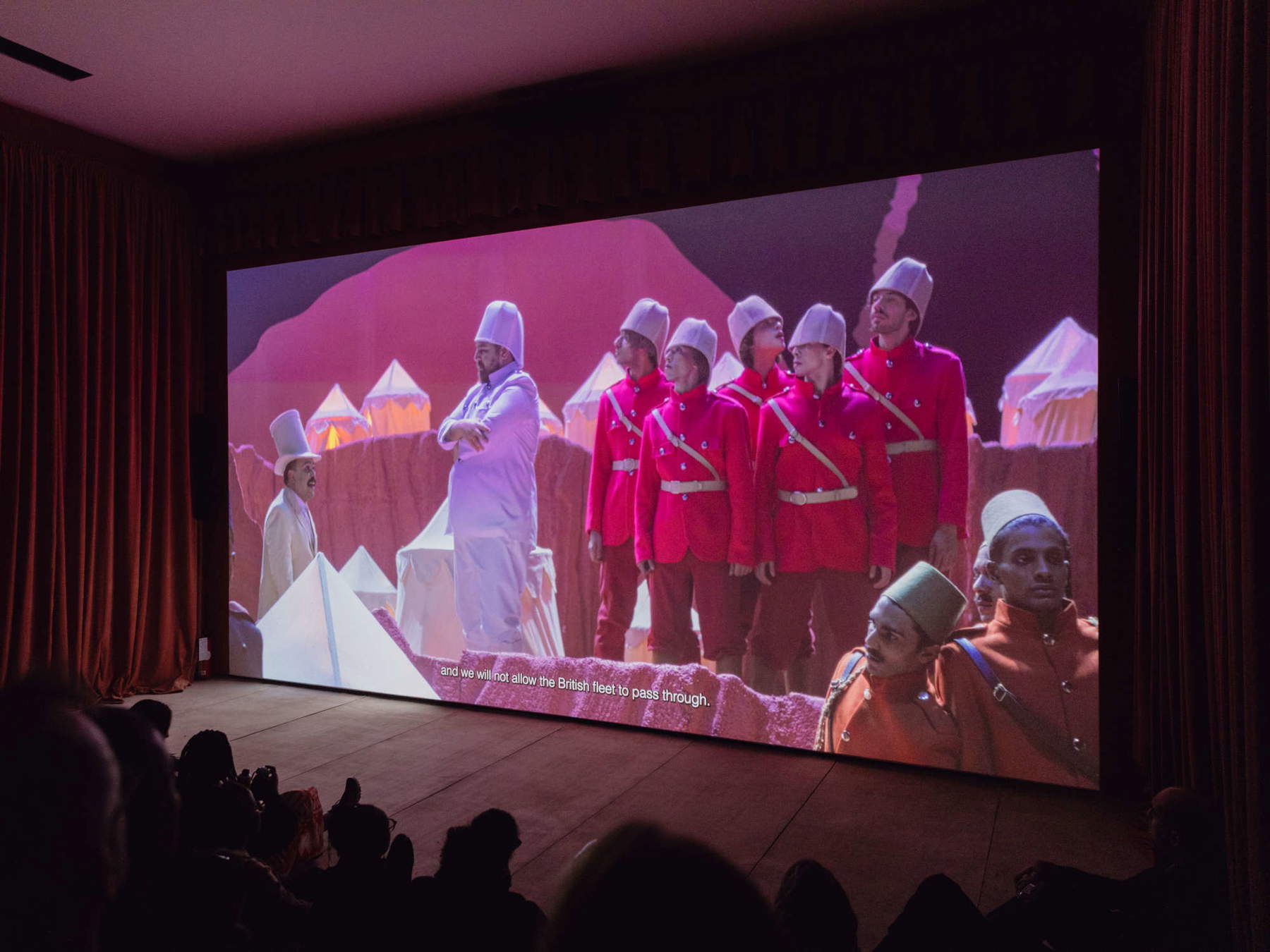
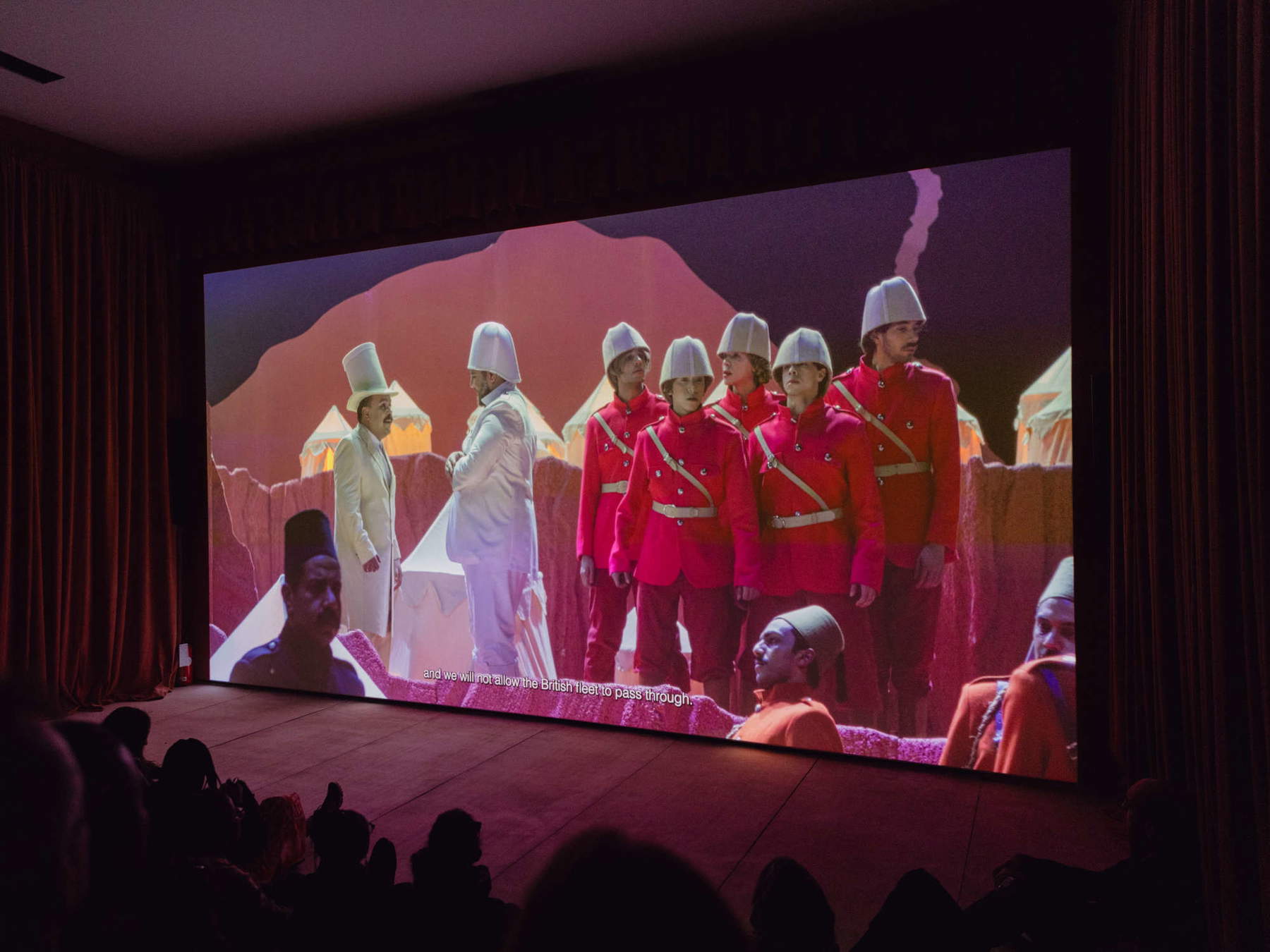
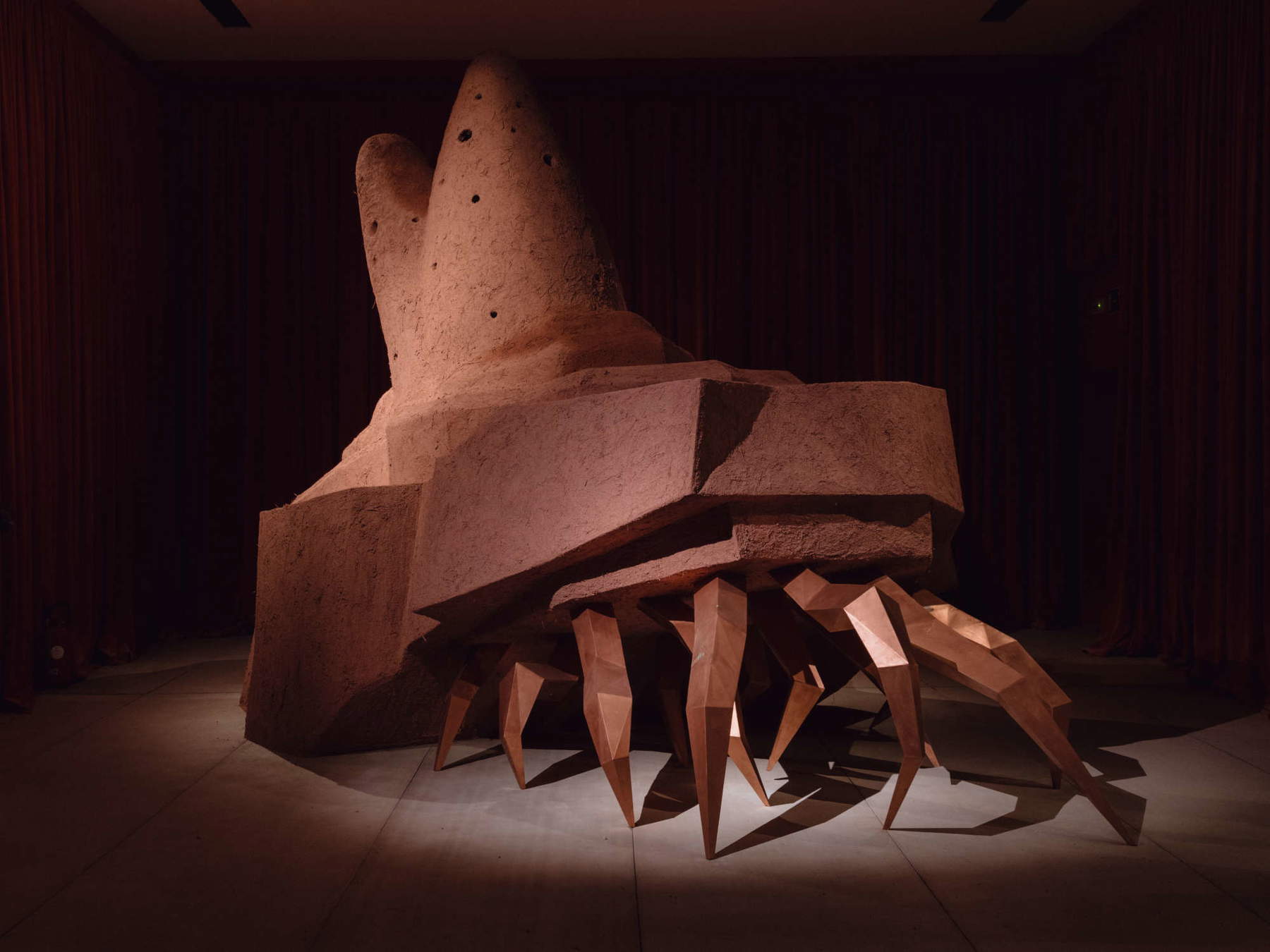
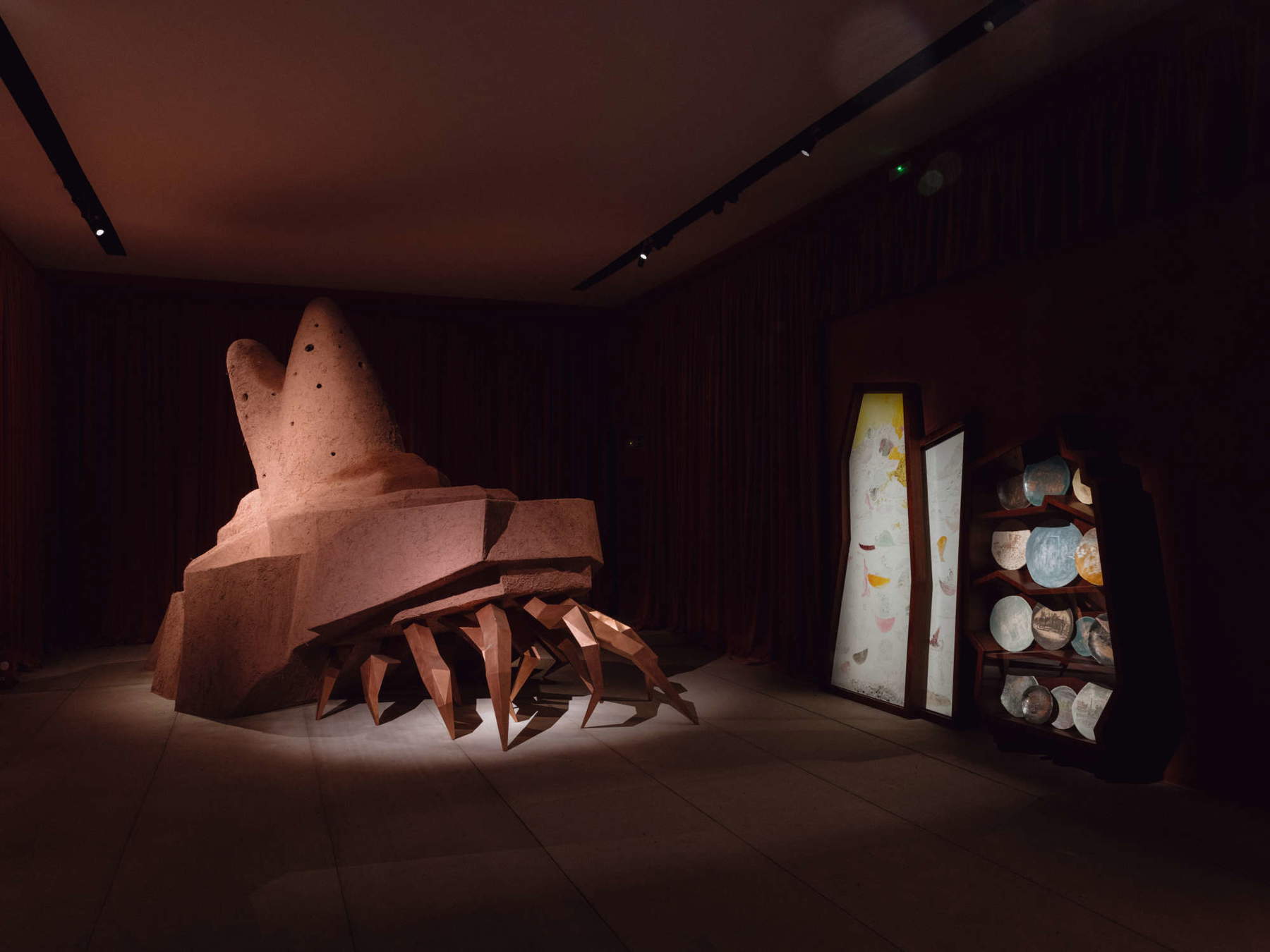
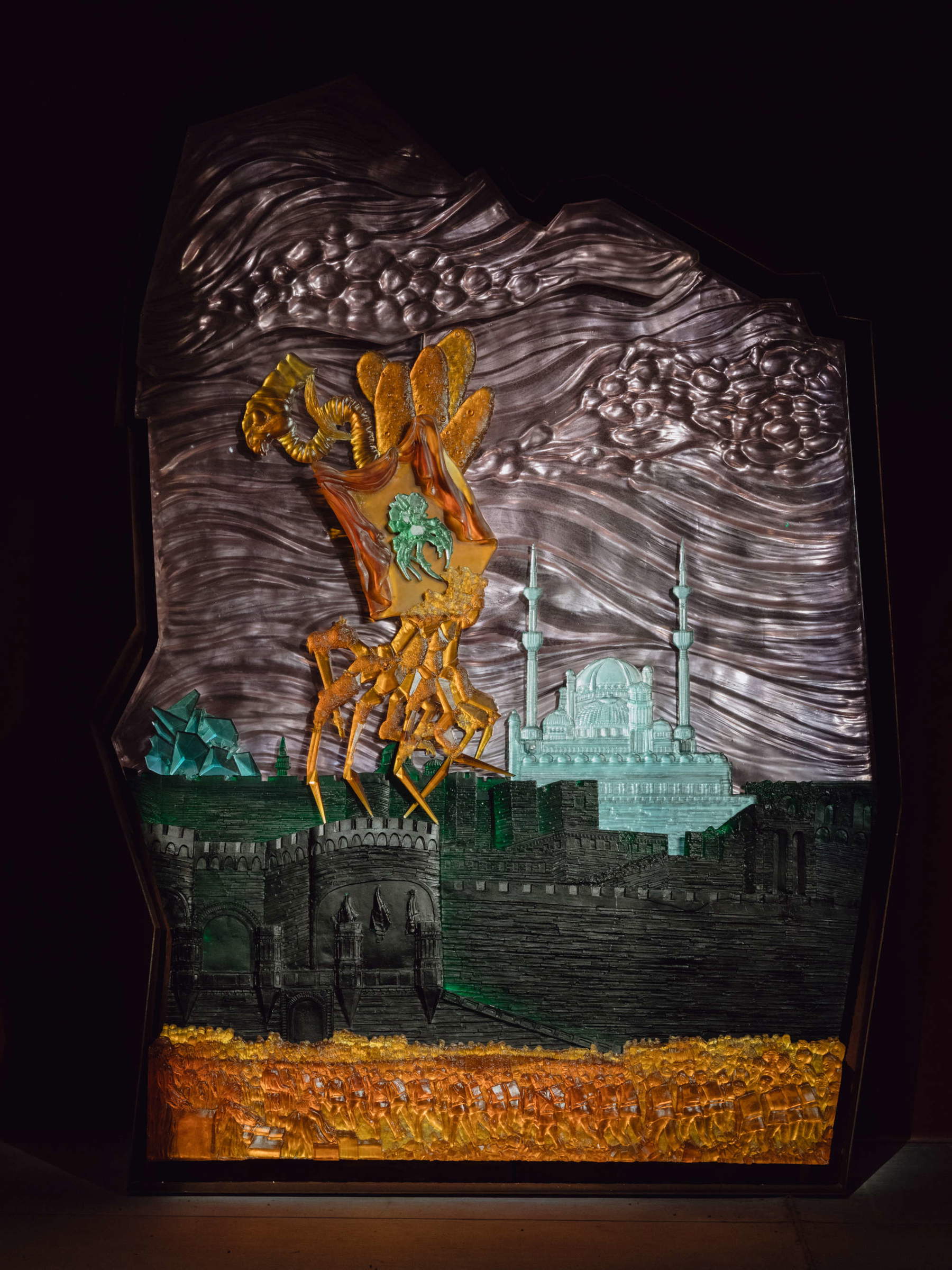
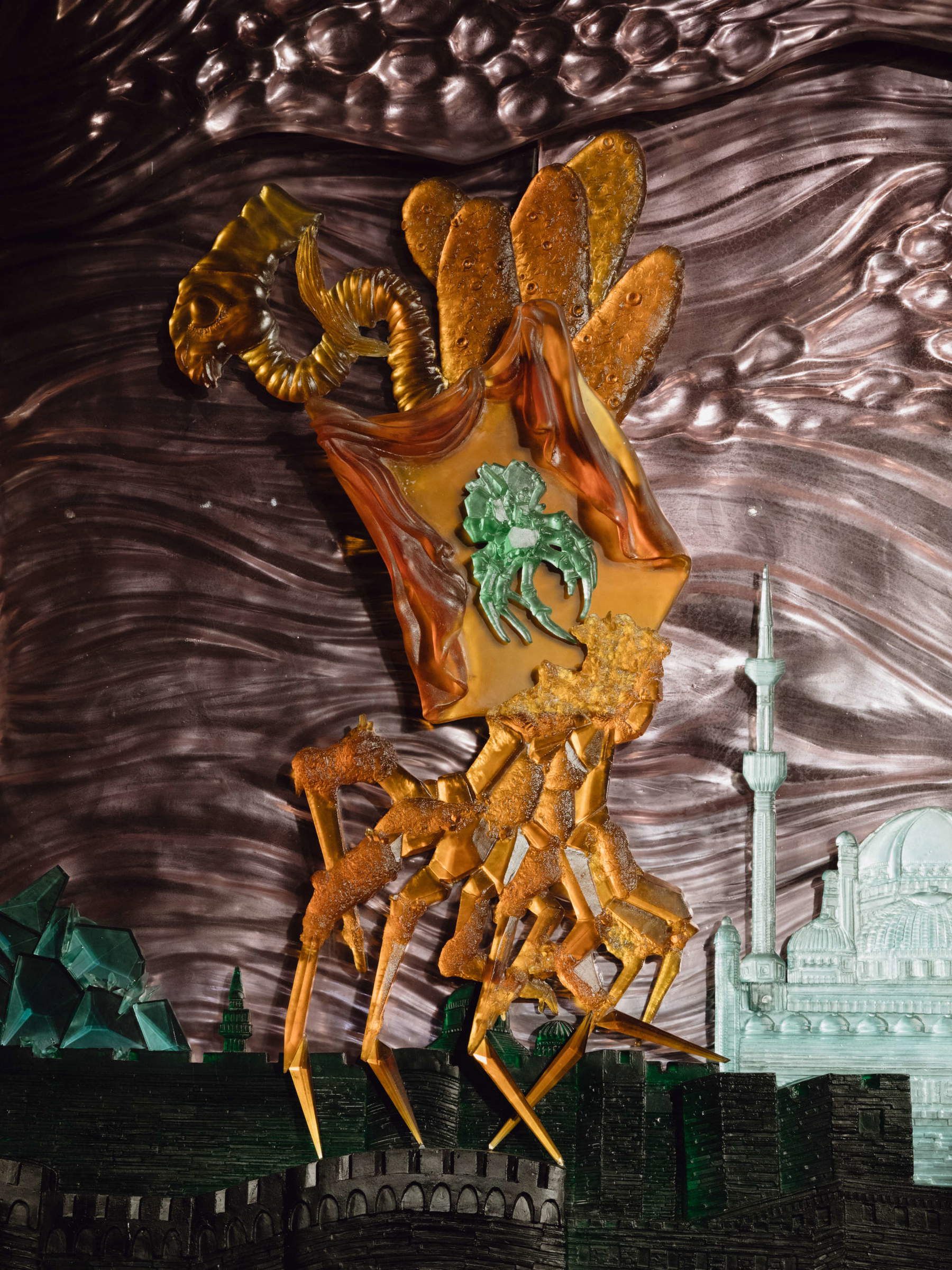
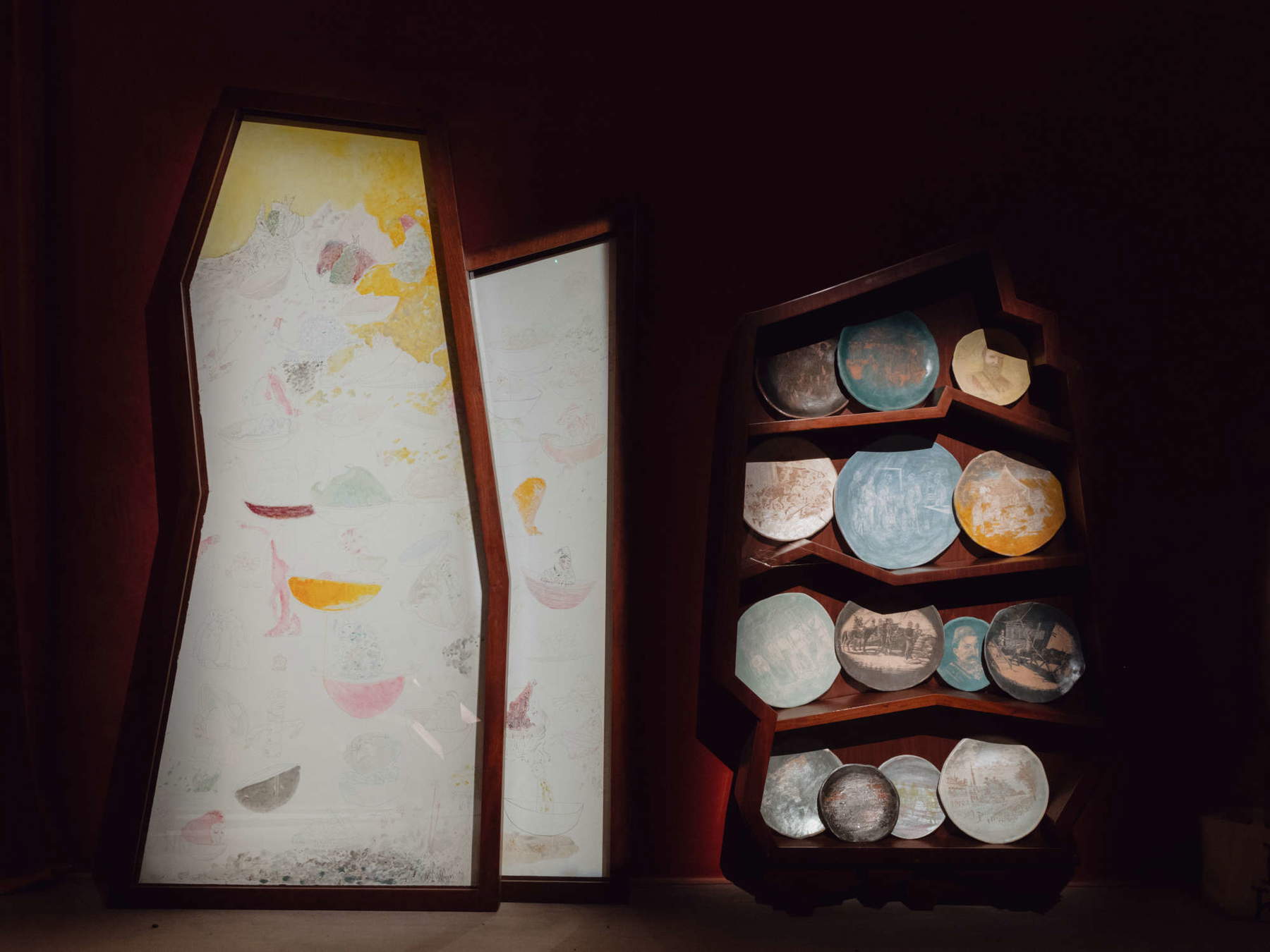
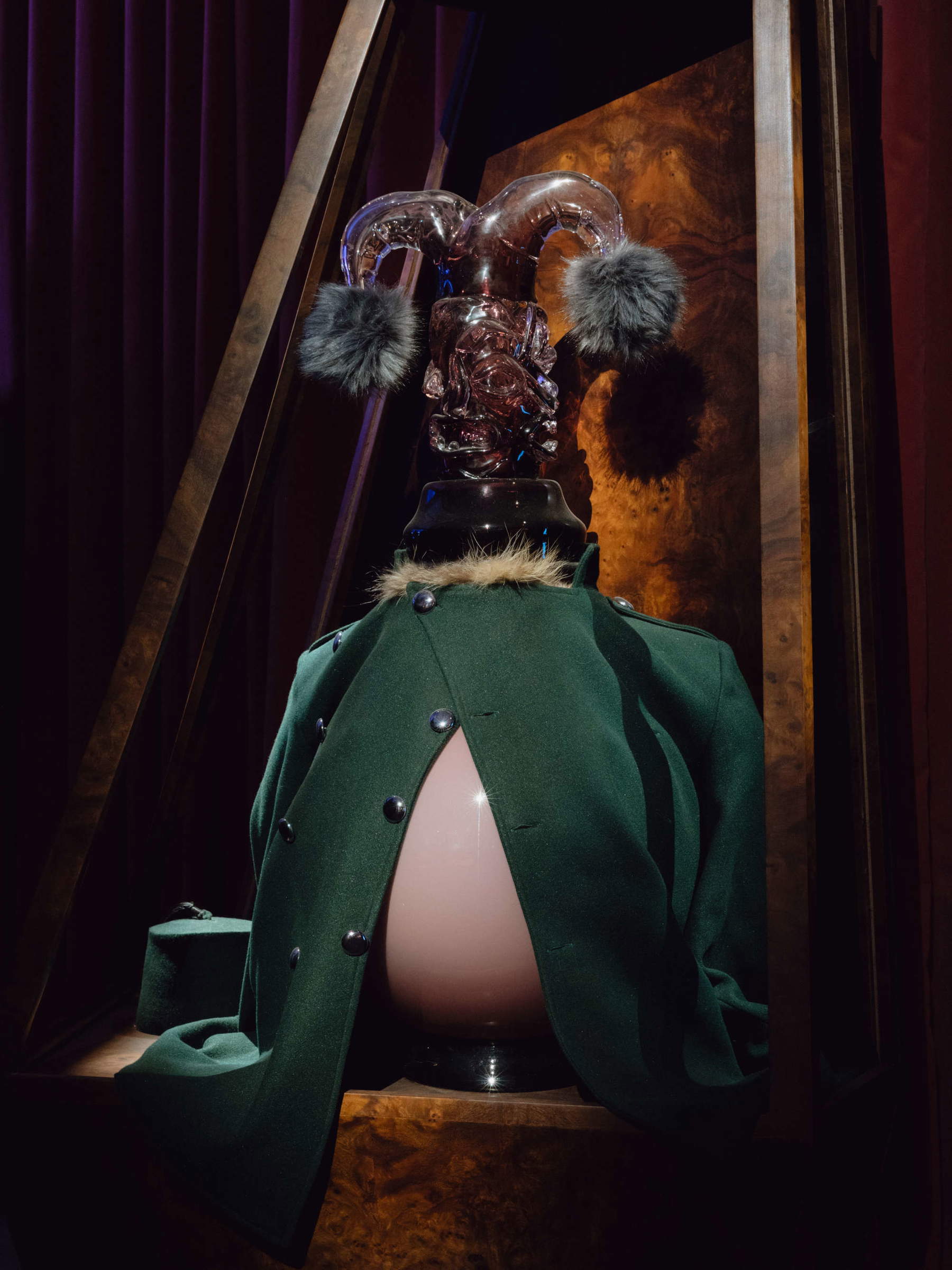
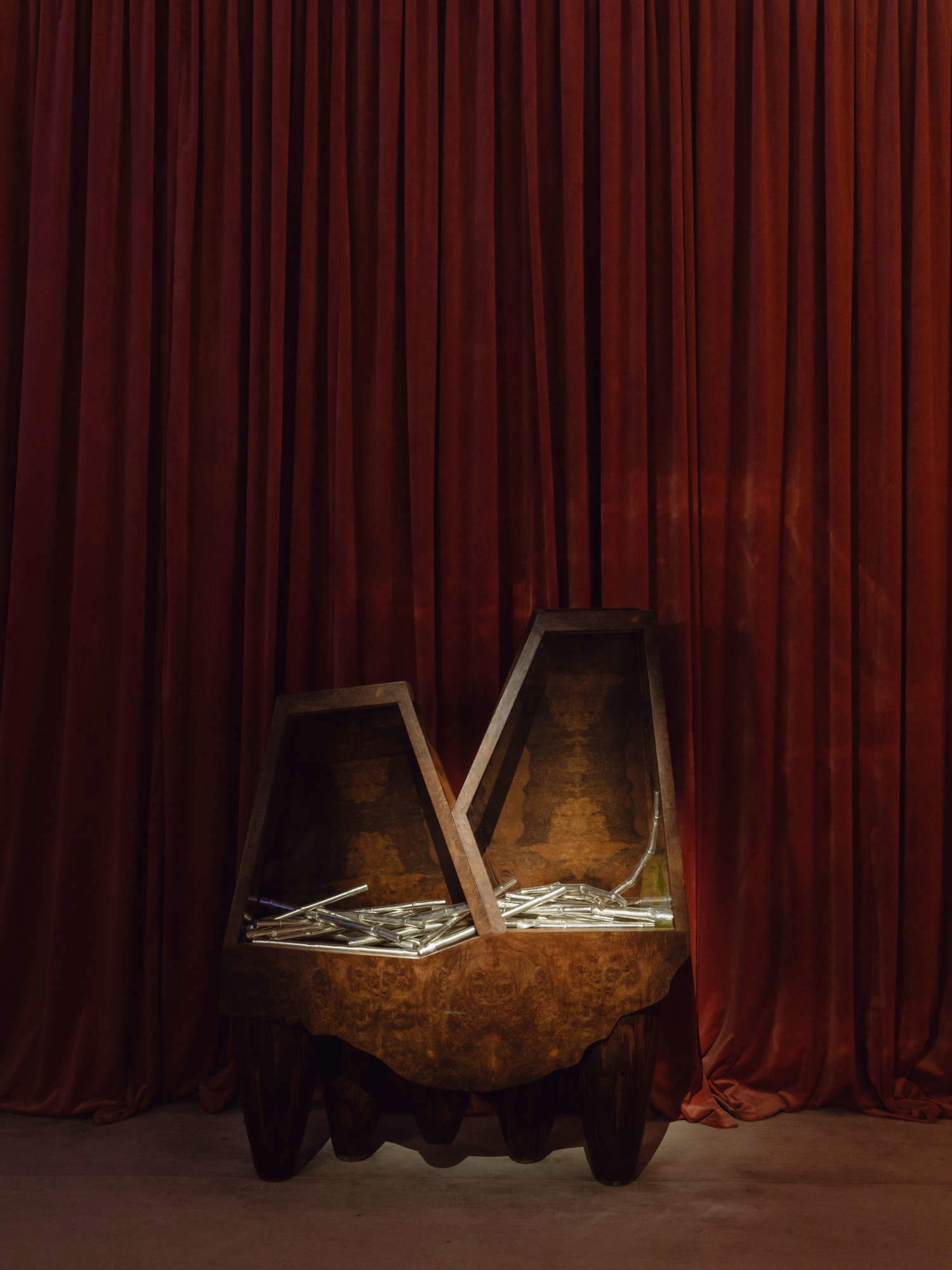
What gives coherence to the wide range of expressive media used by Wael Shawky is his interest in the idea of society in transition (from nomadic to agricultural and from agricultural to urbanized), hence his use of history as the main medium in his art. Unlike the many generically “expository” pavilions we find at the Biennale, in which various media contribute to detailing and documenting a specific circumstance, tending to the detriment of the self-sufficiency of the work with respect to the fact of which it is the presentation, here history is not an end in itself, but a tool and a model for a creation of universal reach.
Scrutinizing history from an Arab perspective - already famous in this regard is the trilogy of videos interpreted by puppets entitled Cabaret Crus ades (2010-2015) that reconsiders the Western version of the Crusades - thus does not mean for him to bring to light an unambiguous truth to oppose the mystifications of official narratives, but to poetically demonstrate the partiality of each point of view in favor of a choral vision of humanity. Taking its cue from the intricate gestation of Egyptian national identity and emphasizing contradictions, ambiguities and mystifications of the politics underlying historical events, his work is moving and effective in laying bare winners and losers as helpless ectoplasms at the mercy of fragile balances of power. Not, then, the reenactment of history through the rhythm of facts, but a monody in which key characters, in unison with their afferent factions that repeat their movements, confront each other with the ambiguous weapon of words (sung in Arabic with English subtitles) glacial in their officious placidity. Shawky’s focus plumbs the gaps of this chaotic and decisive moment in Egyptian history through a meticulous reconstruction of its background that eventually blurs the concept of truth, pulverizing it into a myriad of particular narratives whose reasons are made explicit. What emerges powerfully, then, is a kind of slow-motion counter-epic on the futility of war and the need for historical revision, in which the typecasting and deliberate inexpressiveness of the characters arouses an involvement that transcends the spatiotemporal location of the events on stage. Emblematic in this regard is the episode of bargaining in which representatives of the colonial powers contending for Egypt gather around a dangerously tilted table on lopsided crustacean legs, similar to those of the central sculpture in the exhibition. Or, even more, the scene in which Alexandrina Victoria, Queen of the United Kingdom, strolls placidly in gala dress over the ruins of the bombed-out city, magnifying the beauty of the evening, while behind her are dragged carts overflowing with corpses.
Shawky’s could be described as a surreal tragedy without catharsis, in which stasmi (the moments when the chorus with song and dance commented on, illustrated and analyzed the situation unfolding on stage) take over, simultaneously weaving and untangling the complexity of the situation.
The affinity of the artist’s poetics with ancient mythopoeic thought is confirmed by the other major exhibition he is currently leading in Venice, entitled I Am Hymns of the New Temples. Here, too, the exhibition project is centered on the film work of the same name, made in 2023 at the Archaeological Park of Pompeii as part of the Pompeii Commitment program. Archaeological Subjects.






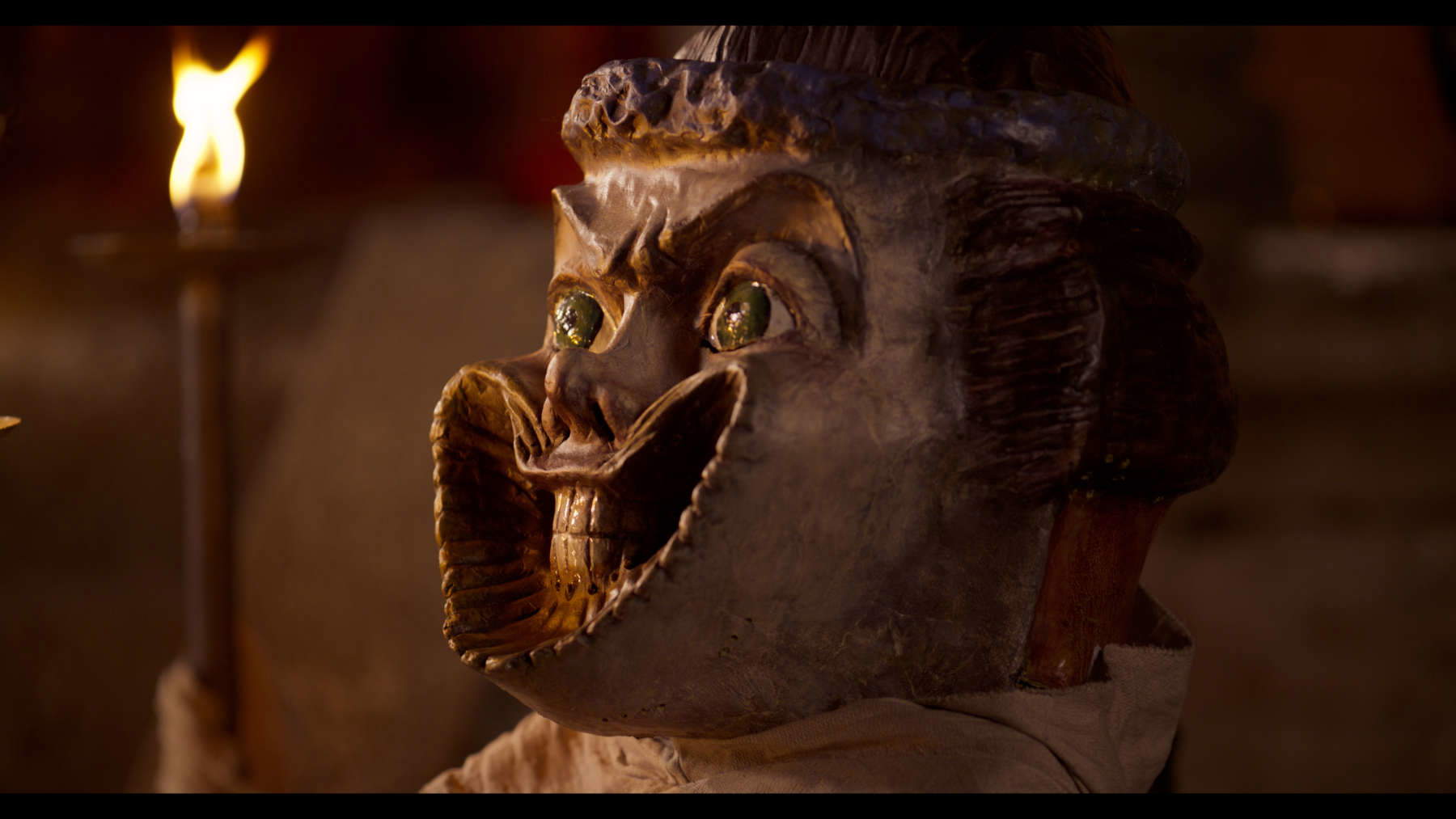


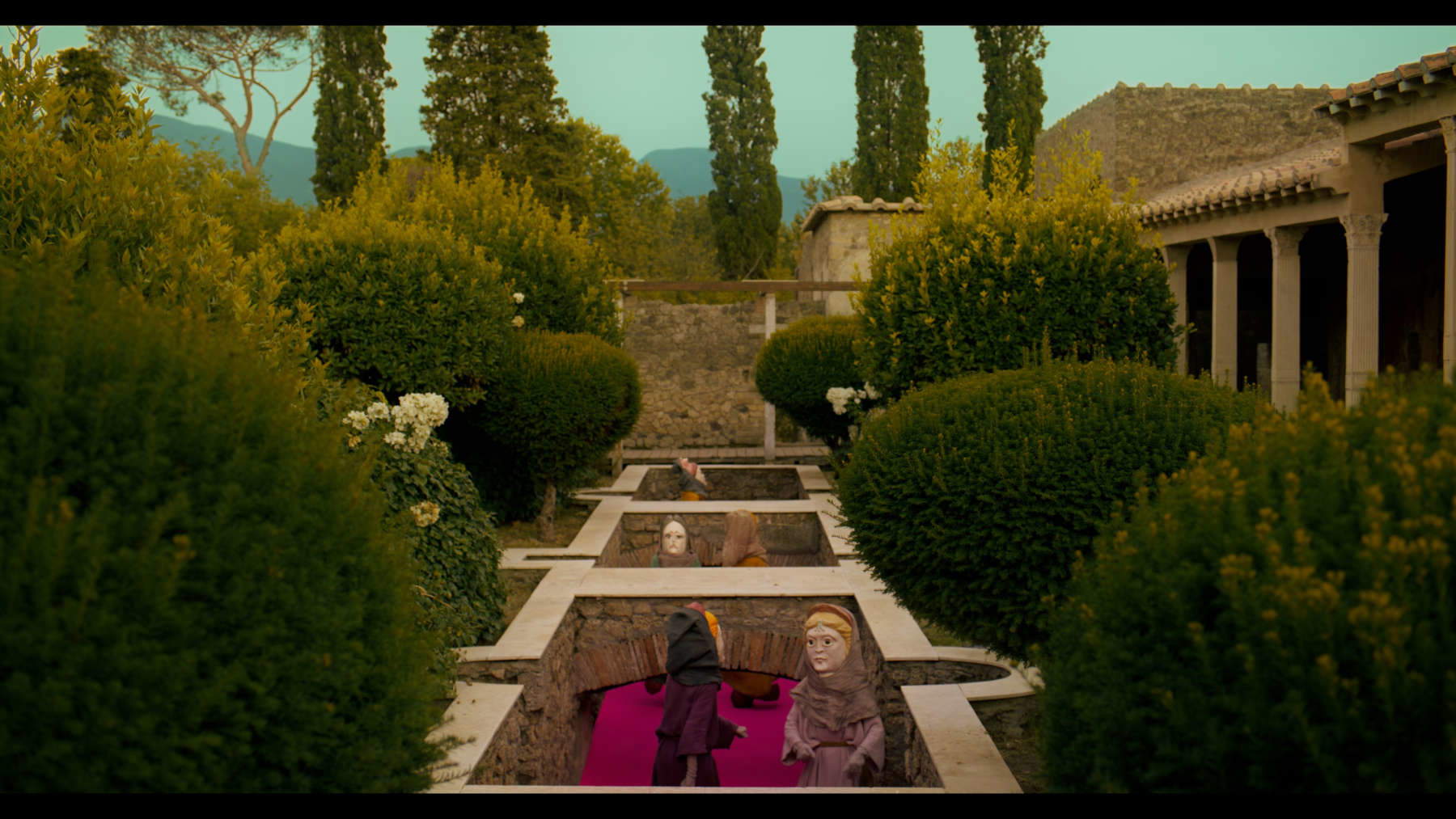
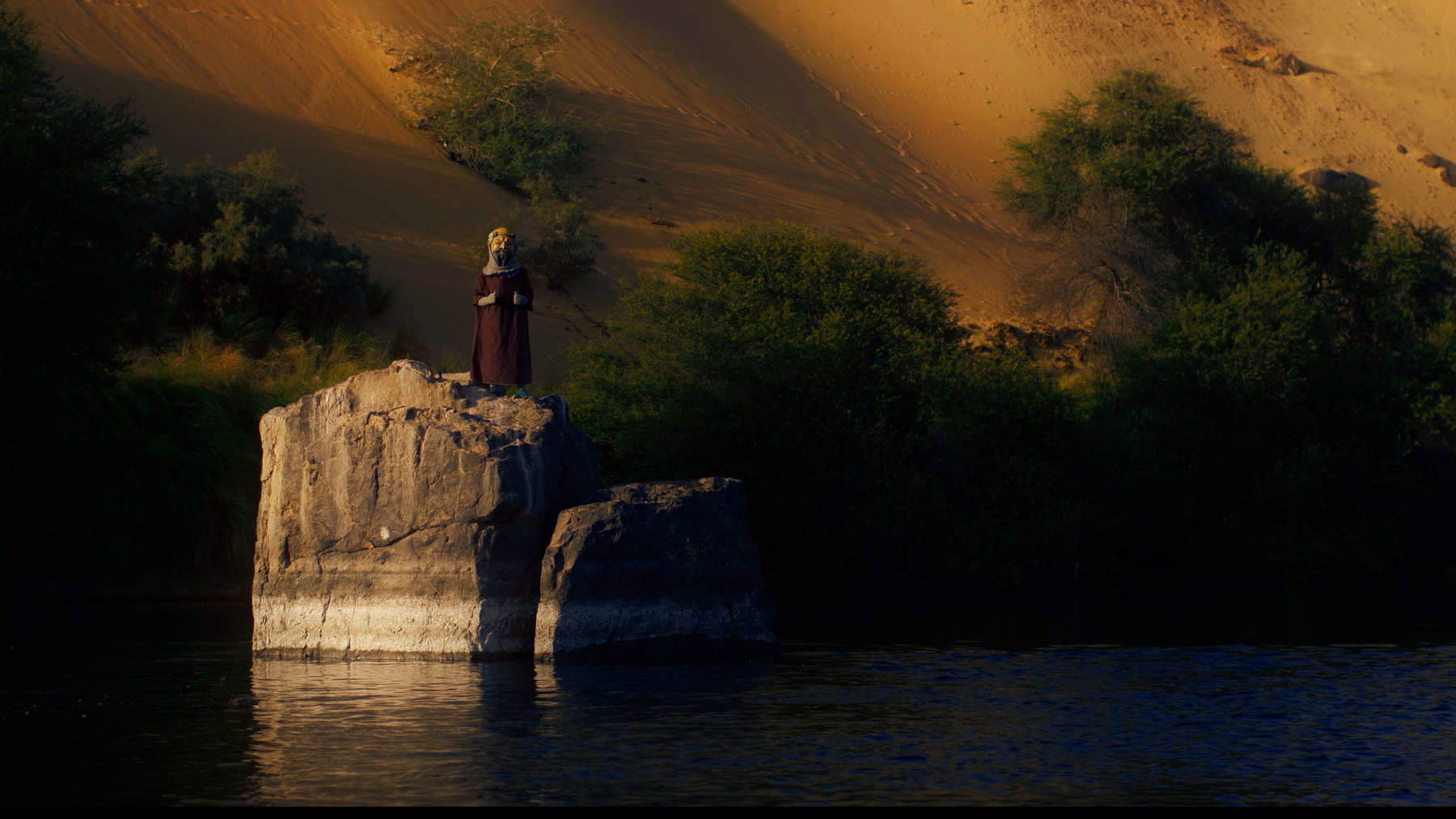

In this Pompeian story interpreted by performers with their faces concealed by archaically dreamlike masks (an intermediate step between the puppets of Cabaret Crusades and the puppet-men of Drama 1882), the creation of the universe from the primordial egg to Prometheus and his betrayal of the gods in favor of a humanity connoted by the same lost predisposition to intrigue as the gods. Here, too, myth is treated as material to be revised and hybridized, highlighting the intersections between epic tales from different cultures, where we discover, for example, that the priestess of Hera called Io by the Greeks was known in Egypt as Isis, while her son-companion Epaphas became Osiris.
By overwriting different stories in a polyphony of voices and cadenced dances, the artist once again seems to affirm the fluidity of oral tradition as a privileged means of handing down and keeping alive an identity, which it will never be possible to fix in a definitive all-encompassing written systematization. The same attitude can be found in the more dated video with which Shawky participates in the exhibition Your Ghosts Are Mine, Expanded Cinemas, Amplified Voices, also in Venice, being held at ACP-Palazzo Franchetti and produced in collaboration with Qatar Museums, an interesting exhibition that brings together the work of more than forty filmmakers and video artists from the Arab-cultured East and the global South. The film in question, titled Al Araba Al Madfuna III (2016) and part of a trilogy, is inspired by Shawky’s visit to the village of Al Araba Al Madfuna, built next to the archaeological site of a pharaonic kingdom in ancient Egypt, where the artist lived for several weeks with the locals, witnessing their underground excavation activities in search of treasures by orienting himself with alchemy and spiritual powers. In the video, children dressed in turbans and mustaches playing the role of adults explore the temple and recite the parables recounted in The Sunflower (1983) by Egyptian writer Mohamed Mustagab, in which the sunflower becomes a metaphor for an invention of change that evokes an inextricable patchwork of metaphysical and social anxieties. Here, too, the estrangement caused by the altered colors of the footage and the unawareness of the performers elevates the source episode to a generative myth, always open to further grafting of meaning and new interpretations.
Warning: the translation into English of the original Italian article was created using automatic tools. We undertake to review all articles, but we do not guarantee the total absence of inaccuracies in the translation due to the program. You can find the original by clicking on the ITA button. If you find any mistake,please contact us.